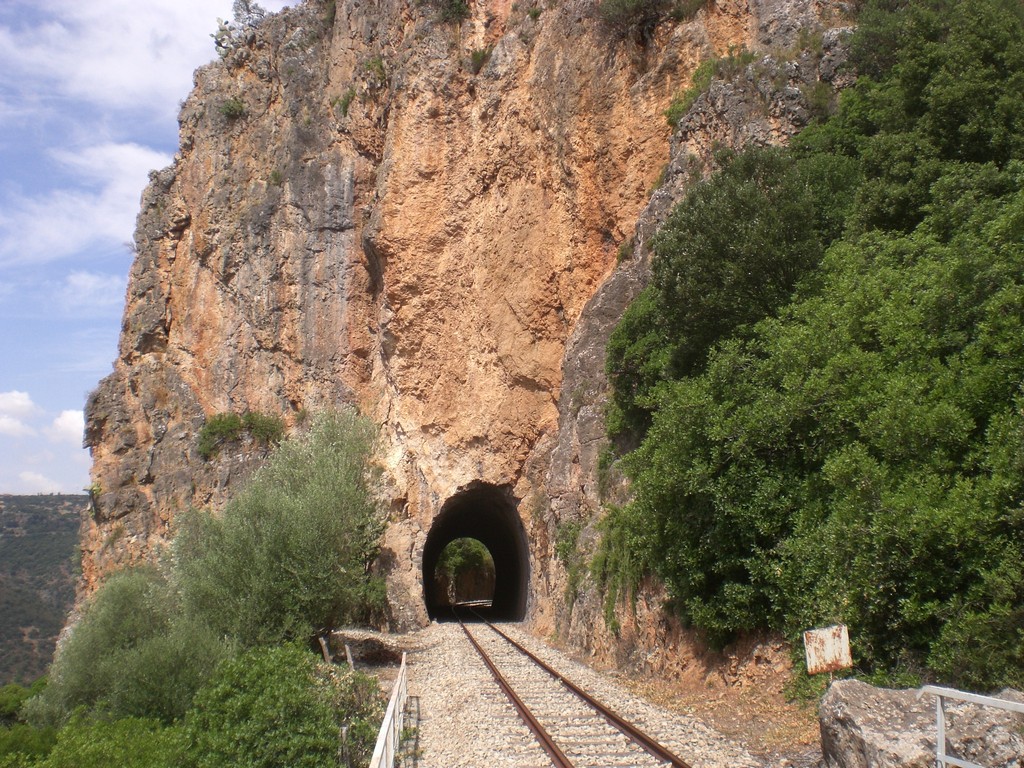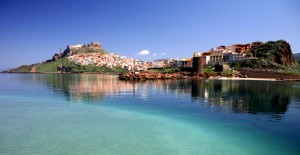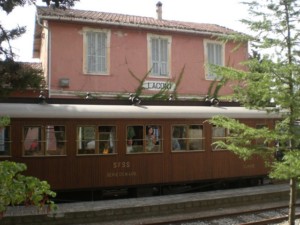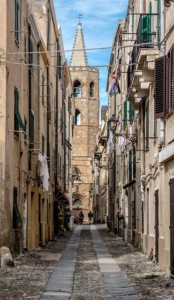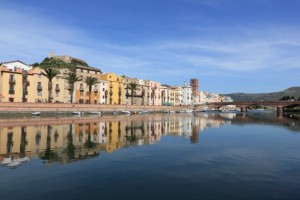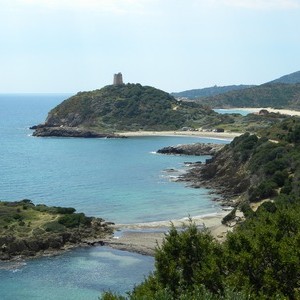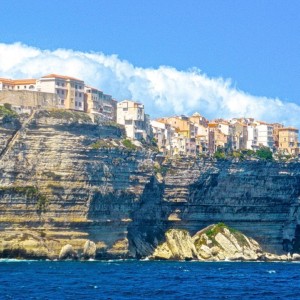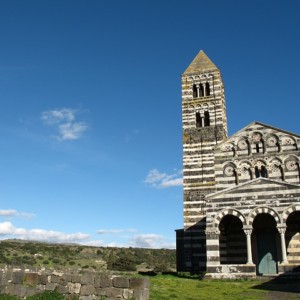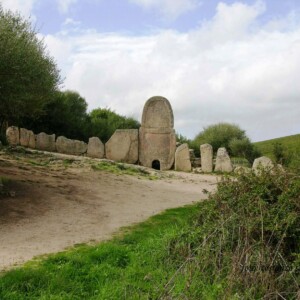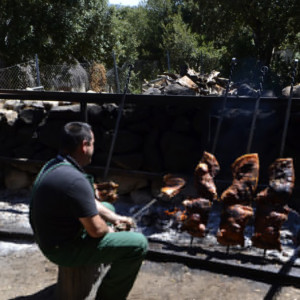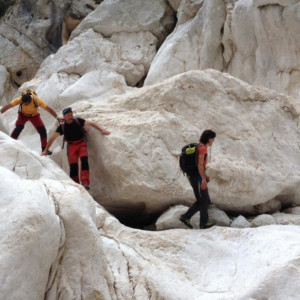Description
Sardinia Rail Tour
A Journey Through History, Scenic Beauty, and Culinary Delights
8 days -7 Nights
Introduction
Explore Sardinia at a leisurely pace with our 8-day, 7-night Sardinia Rail Tour. Step aboard historic trains featuring original wooden seats and embark on a journey back in time. Traverse oak-covered mountains, picturesque hillside villages, and roads lined with Mediterranean vegetation.
This adventure goes beyond train travel; it offers a comprehensive experience of Sardinia. Discover the island’s rich history as you visit ancient nuraghi, traditional villages, and even unwind in Roman baths. The landscapes unfolding before you are breathtaking, with the crystal-clear waters of the Sardinian sea as a backdrop.
As you traverse this captivating terrain, you’ll have the chance to savor the flavors of Sardinia. Taste locally produced goods, expertly prepared beneath centuries-old oak canopies by skilled Sardinian shepherds. his tour offers a unique blend of history, natural beauty, and culinary delights, all while you explore Sardinia by train under the guidance of local experts.
Highlights
• Explore the stunning landscapes of Sardinia by historic train, taking in mountains, oak woods, and charming villages.
• Immerse yourself in the rich history of Sardinia with visits to ancient sites, including nuraghi, Roman baths, and medieval towns.
• Enjoy a leisurely ride on the historic Little Green Train and admire the picturesque scenery.
• Discover the natural beauty of the Marquis Ignazio Aymerich Botanic Park in Laconi.
• Savor local products and traditional Sardinian cuisine in various charming towns and villages.
• Visit the ancient thermal baths of Fordongianus, a hidden gem with healing sulfurous waters.
• Explore Cagliari, the historic capital of Sardinia, and its main monuments, including the Cathedral of Santa Maria and the Basilica of Bonaria.
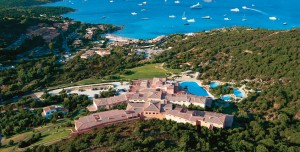
Day 1: Arrival in Olbia – Your Sardinian Rail Adventure Begins
Upon landing at Olbia Airport, you’ll be warmly greeted by your guide and transferred to a comfortable hotel in the Olbia region. Take some time to settle in, relax, and get ready for the remarkable rail journey that awaits you. Later, enjoy a delightful dinner at the hotel before a restful overnight stay, gearing up for the exciting days ahead.
Includes: Dinner
Overnight: Olbia / Costa Smeralda
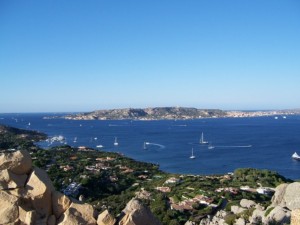 Day 2: Maddalena & Caprera Islands, Garibaldi Museum, and Porto Cervo Marvels
Day 2: Maddalena & Caprera Islands, Garibaldi Museum, and Porto Cervo Marvels
After a delicious breakfast, we embark on an exciting journey to Palau. Here, we board a ferry that will transport us to the enchanting La Maddalena Island, the heart of the National Park. Our tour of this island will lead us to its unspoiled beaches and offer breathtaking vistas overlooking the sea towards the French island of Corsica. It’s fascinating to note that the US Navy had a significant base on La Maddalena for five decades.
Next, we visit the captivating island of Caprera, known as the last refuge of Giuseppe Garibaldi, the father of Italian independence. You’ll have some free time for lunch, allowing you to explore the charming streets of the island’s town.
As we return to the Sardinian mainland, we have the pleasure of discovering the renowned Emerald Coast, where we find Porto Cervo, the summer capital of luxury and an international jet-set haven. Our time in Porto Cervo allows us to stroll through the captivating Porto Cervo Marina, where we’ll encounter splendid villas and hotels, architectural masterpieces that blend seamlessly with the coastal beauty. This location even made its mark in the world of James Bond, adding to its reputation as a luxurious paradise.
We then make our way back to the hotel, where a delightful dinner and a restful overnight stay await us.
Includes: Breakfast, Dinner
Overnight: Olbia / Costa Smeralda
Day 3: Gallura Green Train, Bandits Museum, and Castelsardo
After breakfast, we embark on a captivating train journey aboard the Gallura Green Train from Arzachena. The scenic route takes us through the Gallura Region’s lush landscapes adorned with cork oak trees. We’ll pause at Lake Liscia, offering a break to soak in the Mediterranean scents and stunning scenery. Our journey continues to Tempio Pausania, where we enjoy another stop.
Next, we visit Aggius, home to the intriguing Museum of Bandits, providing a glimpse into the region’s history. A delightful lunch awaits at a local restaurant. In the afternoon, we explore Castelsardo’s fortified village, with free time for shopping. We then head to Sassari for check-in, followed by dinner and an overnight stay.
Aggius, nestled in Gallura’s heartland, boasts captivating landscapes with cork oaks, granite formations, and lush Mediterranean greenery. The village is renowned for its well-preserved old houses, constructed from local granite, representing fine examples of regional folk architecture. Aggius is not only a hub for granite quarrying but also has a thriving tradition of hand-loom carpet making and weaving. The village’s choir, known as Gallura’s cockerel, is celebrated for its unique vocal performances in a region rich in choral traditions. In 2005, Aggius received the Orange Flag from the Italian Touring Club for its old town, natural attractions, and quality tourist services.
Includes: Breakfast, Lunch, Dinner
Overnight: Sassari
Day 4: Free Time in Sassari and Alghero Exploration
Enjoy a leisurely morning in Sassari’s historic city center, perfect for shopping or sipping coffee at a local café. Lunch is on your own.
In the early afternoon, we venture to Alghero, often referred to as the “Little Barcelona.” This renowned North-West Sardinian coastal town attracts global visitors, nestled in the heart of the Coral Riviera, known for its prized red coral. The town’s old quarter is a treasure trove, with ancient Aragonese palaces, fortified walls, and watchtowers lining narrow streets. Alghero is a shopper’s paradise, offering a wealth of boutiques, including the famed Antonio Marras store.
You’ll learn about the city’s history, marked by Genoese colonization and later Catalan rule for around four centuries, leaving a lasting Catalan-speaking population and the moniker “Barceloneta.” The Alghero dialect, Algherese Catalan, reflects this unique linguistic blend.
Explore the defensive towers encircling the old town, such as Torre di Porta Terra, Torre di San Giovanni, Torre di Sulis, Torre di San Giacomo, Torre della Polveriera, Torre di Sant’Elmo, and Torre di Garibaldi. Discover the historic ramparts, constructed during the Catalan-Aragonese era, honoring famed explorers and navigators.
Notable sites include:
Sulis Square: A bustling gathering place for locals and tourists, with clubs and an ancient watchtower at its heart.
Plàia Civica: A medieval square graced by the iconic Duke of Abis Palace.
S. Maria Cathedral: Dating to the 16th century, the cathedral showcases Catalan-Gothic style with later Renaissance additions, housing a sepulchral monument to Maurizio Savoia and a late Baroque altar from the Sabaudo period.
The day concludes with dinner back at the hotel.
Includes: Breakfast, Dinner
Overnight: Sassari
Day 5: Bosa, Scenic Train Journey to Oristano
After breakfast, we head to Bosa, renowned for the Malaspina family castle and its charming, colorful facades. Explore the captivating town of Bosa during a guided walking tour and enjoy lunch in the town.
In the afternoon, embark on a scenic train journey starting from Bosa Marina. As the train follows a sweeping curve, relish panoramic views of the coast. The landscape gradually transforms, revealing the hills of the Malvasia vineyards and grazing lands. (Optional: Make a stop in Tresnuraghes village for a Malvasia wine tasting.)
We then proceed to Oristano for dinner and a comfortable overnight stay.
Bosa: The guided city tour allows you to delve into the historic center with opportunities to visit the monuments. Our knowledgeable guide will lead you on a journey to uncover the city’s ancient treasures, spanning a rich history dating back to Phoenician times through the Middle Ages, highlighted by the imposing Malaspina Castle. The tour begins at Piazzale Nasiriyah and encompasses visits to the Cathedral dedicated to Mary Immaculate, where you can admire the artwork of Emilio Scherer and other significant pieces. Stroll along Corso Vittorio Emanuele, known as “Sa Piatta,” flanked by elegant 19th-century palaces. Explore the medieval route in the picturesque Sa Costa area, characterized by houses perched along the Serravalle hill.
Optional excursions in Bosa:
• Explore the ancient Malaspina Castle and its palace chapel, home to some of the most important medieval frescoes on the island.
• Enjoy an entrance and guided tour of the ancient Cathedral of St. Peter extramuros, one of Sardinia’s oldest Romanesque churches.
• Discover the ancient tanneries (external visit only), a significant example of industrial archaeology.
• Visit the Museum of Conce, Museo Casa Deriu, and the Municipal Art Gallery.
• Explore the Ethnographic Museum Stara.
• Observe the craft of filigree in Bosa.
Includes: Breakfast, Lunch, Dinner
Overnight: Oristano
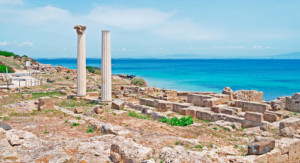 Day 6: Tharros Exploration and Oristano Discovery
Day 6: Tharros Exploration and Oristano Discovery
Following breakfast, we journey to Tharros, a Phoenician port dating back to the 8th century B.C. Located on a strategically positioned peninsula that provided shelter from various winds, Tharros played a vital role in East-West Mediterranean trade routes. Numerous Egyptian scarabs have been discovered in Tharros, adding to the intrigue of whether it could be the Tartessos mentioned in the Bible, a quest that continues in Spain. Enjoy lunch at a local restaurant.
Return to Oristano and embark on a tour of this town, which is perfectly situated on the west coast and serves as the geographic center of Sardinia. It once was the capital of the Giudicato di Arborea, a unique case in Sardinia’s colonization history where it functioned as an independent kingdom for many centuries. The historic center is compact and wonderfully preserved, harkening back to medieval times. The surrounding environment is characterized by marshes and ponds teeming with fish, such as Cabras and Santa Giusta (formerly known as Othoca), influencing the local cuisine.
Return to the hotel for dinner and a comfortable overnight stay.
Includes: Breakfast, Lunch, Dinner
Overnight: Oristano
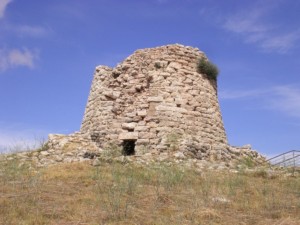 Day 7: Fordongianus Thermal Baths, Laconi Botanic Park, and Green Train Journey to Cagliari
Day 7: Fordongianus Thermal Baths, Laconi Botanic Park, and Green Train Journey to Cagliari
Start your day with a visit to the Fordongianus Thermal Baths, known mainly to locals, offering therapeutic sulfurous waters with a constant temperature of 54°C. These baths have a rich history, having attracted various inhabitants throughout the centuries. They were once known as Forum Traiani, a hub of commerce and importance in Roman times.
Next, explore the Marquis Ignazio Aymerich Botanic Park in Laconi, a 22-hectare park surrounding a neoclassical palace dating back to 1830. The park features the ruins of the ancient Aymerich Castle, a 500-year-old Cedar of Lebanon tree, and beautiful springs and waterfalls. Enjoy a leisurely lunch in Laconi.
Board the green train in Laconi, embarking on a picturesque journey to Isili. Along the way, take in captivating landscapes and the Barrocus Lake. In Isili, visit the Nuraghe Is Paras, an impressive single-tower Nuraghe constructed from white stones. Afterward, continue by bus to Cagliari, the capital of the island, where you’ll check in at the hotel. The evening is free for dinner and a restful overnight stay.
Includes: Breakfast, Lunch, Dinner
Overnight: Cagliari
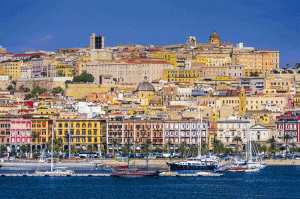 Day 8: Farewell to Cagliari
Day 8: Farewell to Cagliari
After breakfast, enjoy a walking tour of Cagliari, the historic city founded by Phoenician traders. Explore its main monuments, including the ancient Cathedral of Santa Maria and the Basilica of Bonaria.
Later, transfer to Cagliari Airport, marking the end of our services.
Cagliari:
Cagliari, overlooking the Golfo degli Angeli, is an ancient city with a rich history. It was founded by Phoenician traders and has been the heart of Sardinia’s political, economic, tourist, and cultural life. The city sprawls across seven hills: Castello, Colle San Michele, Colle di Bonaria, Monte Urpinu, Monte Claro, Tuvu Mannu, and Tuvixeddu. Cagliari boasts a well-preserved medieval district, Castello, with soaring towers and remnants of its massive curtain walls. It is also home to the largest and most important Phoenician necropolis in the Mediterranean.
Cagliari offers a variety of attractions, including the Botanical Garden, a lush oasis in the heart of the old city, and vast wetland areas like Santa Gilla and Molentargius, teeming with diverse wildlife, including large colonies of pink flamingos.
The city’s most significant festival is the Festival of Sant’Efisio, held on May 1. This colorful procession features groups in traditional costumes from all over Sardinia and culminates in the return of the saint to Cagliari on May 4. The festival originated as a vow made by the Cagliaritani during a plague in the 17th century.
Includes: Breakfast

